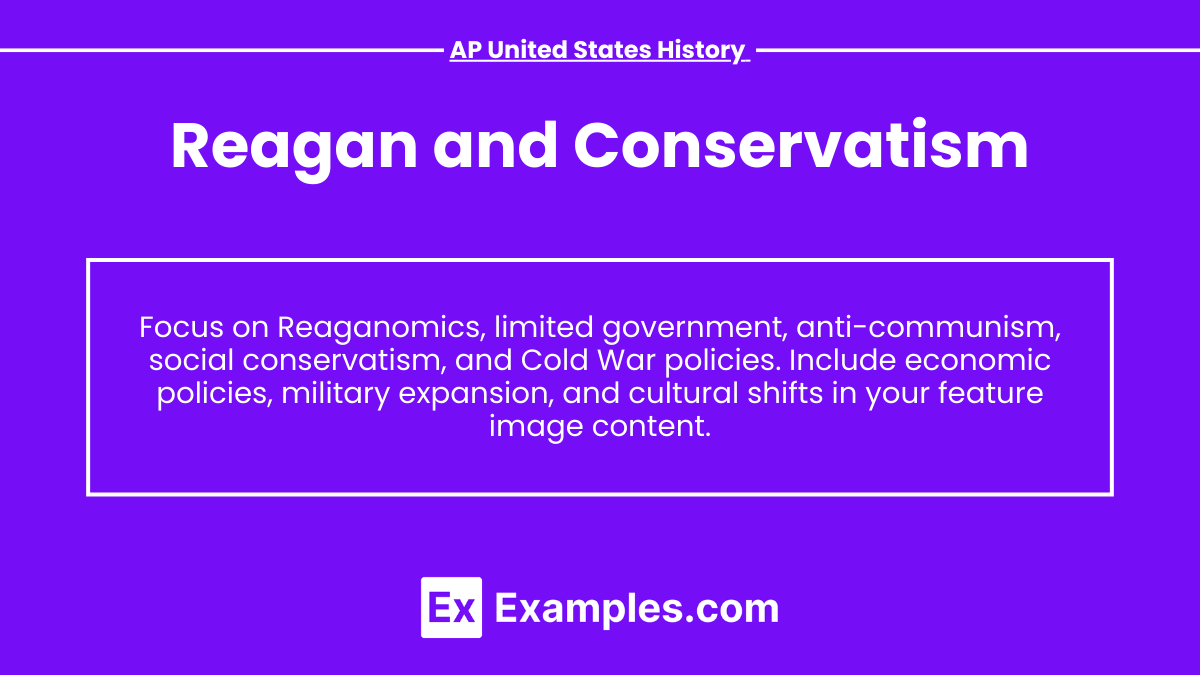For the topic of “Reagan and conservatism” in AP United States History, you should learn about Ronald Reagan’s presidency, key conservative policies, economic approaches like supply-side economics, deregulation, and tax cuts, the rise of the New Right, foreign policy strategies such as the end of the Cold War, and social conservatism.
Free AP United States History Practice Test
Learning Objectives
By studying Reagan and conservatism, you should understand Reagan’s political philosophy and the rise of the conservative movement during the 1980s. Focus on his economic policies, known as Reaganomics, and their impact on the U.S. economy. Analyze Reagan’s role in the Cold War’s conclusion, while also assessing the social and cultural changes driven by conservative values. Key events like the Iran-Contra Affair and the long-term influence of Reagan’s presidency on American politics should also be examined.
1. The Rise of Modern Conservatism
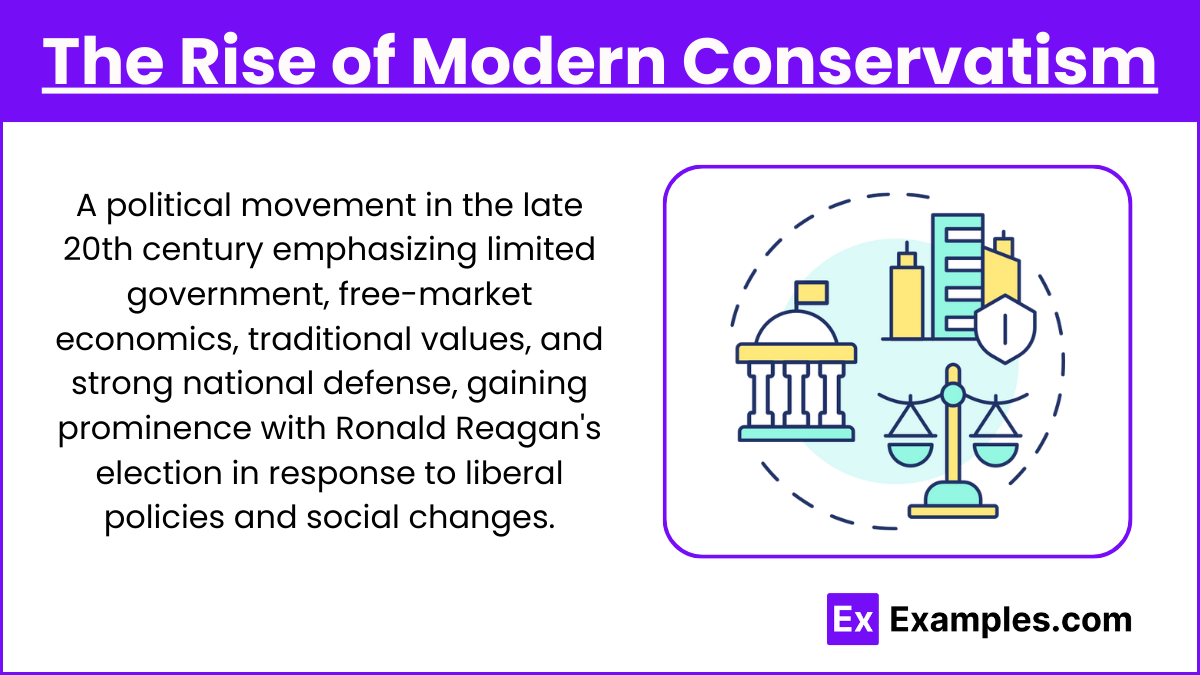
- Post-WWII Context: Following World War II, the U.S. saw an era of liberal policies with Franklin D. Roosevelt’s New Deal, and later, the Great Society programs under Lyndon B. Johnson in the 1960s. However, by the late 1970s, the country experienced economic stagnation, high inflation (stagflation), and foreign policy challenges (such as the Iran Hostage Crisis).
- Rejection of Liberalism: Many Americans, particularly white, middle-class voters, became disillusioned with liberal policies, high taxes, social unrest, and government overreach.
- Key Conservative Figures: Conservative intellectuals like Barry Goldwater (1964 Presidential candidate) and William F. Buckley Jr. laid the ideological groundwork for the rise of modern conservatism.
2. Reagan’s Political Philosophy
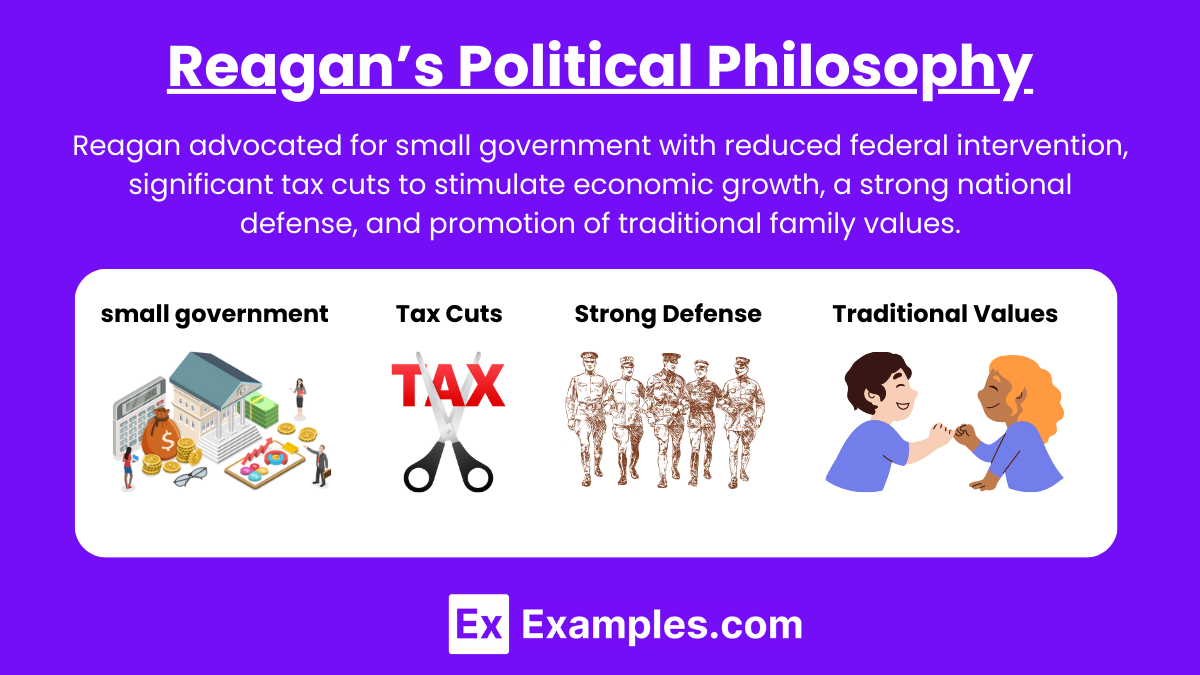
- Small Government: Reagan emphasized reducing the size and role of the federal government, arguing that excessive government regulation and spending were harmful to individual freedom and economic growth.
- Tax Cuts: A hallmark of Reagan’s conservatism was his belief in lower taxes to stimulate economic growth.
- Strong Defense: Reagan was a staunch advocate for military strength, particularly in combating the Soviet Union during the Cold War.
- Traditional Values: Social conservatism played a crucial role in his ideology, promoting traditional family values and opposition to abortion, feminism, and LGBTQ rights.
3. Reaganomics and Domestic Policy
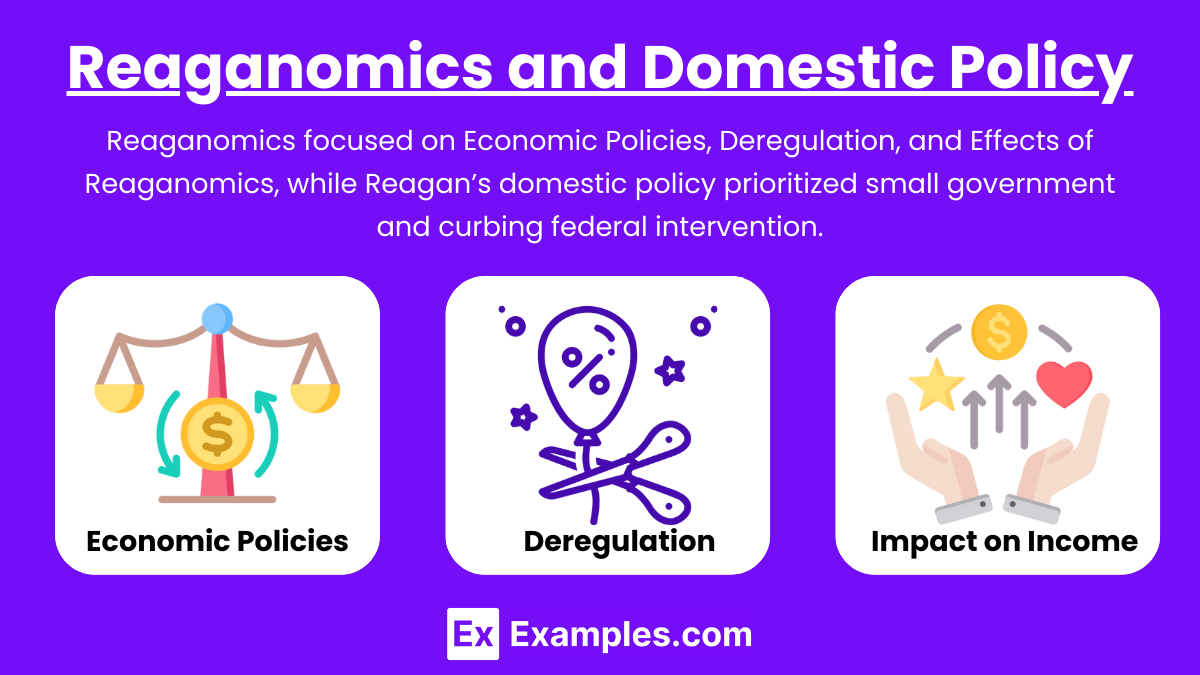
Economic Policies
- Reaganomics: Reagan’s economic plan, often referred to as “trickle-down economics,” aimed to stimulate the economy by cutting taxes, particularly for the wealthy and businesses, with the belief that the benefits would “trickle down” to all levels of society.
- Economic Recovery Tax Act (1981): The largest tax cut in U.S. history, reducing taxes by 25% over three years.
- Supply-Side Economics: A key component of Reaganomics, it emphasized boosting production by lowering barriers for businesses.
Deregulation
- Reducing Government Regulation: Reagan sought to limit government intervention in industries, reducing regulations on oil, telecommunications, airlines, and banking to foster free-market competition.
Impact on Income
- Initial Success: The early years saw economic growth and a reduction in inflation.
- Increased Deficits: Despite cutting taxes, military spending surged, leading to large budget deficits and a growing national debt.
- Income Inequality: Critics argue that Reaganomics primarily benefited the wealthy, while lower-income Americans saw fewer benefits.
4. Social Conservatism and the “Moral Majority”
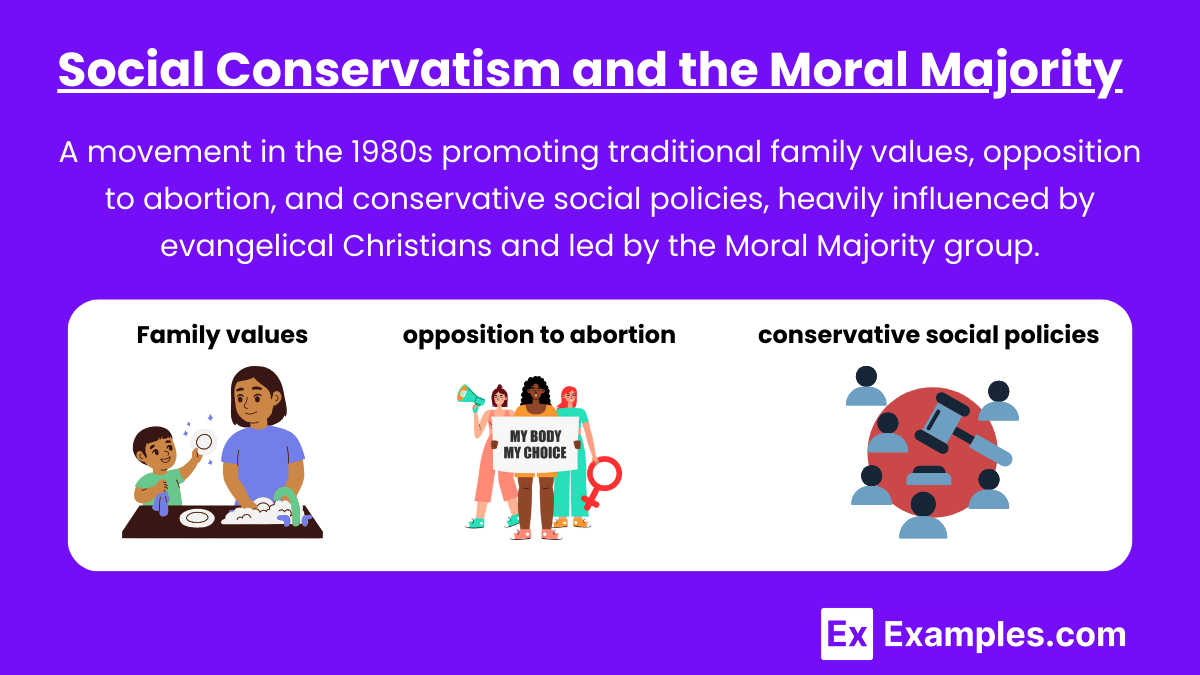
- Religious Right: Reagan’s presidency aligned closely with the rise of evangelical Christian groups, like Jerry Falwell’s Moral Majority, which pushed for a return to family values, anti-abortion policies, and opposition to the Equal Rights Amendment (ERA).
- Supreme Court Appointments: Reagan appointed conservative justices like Sandra Day O’Connor (the first woman on the Supreme Court) and Antonin Scalia, shaping the judiciary for years to come.
- War on Drugs: Reagan intensified efforts to combat drug abuse, launching the “War on Drugs”, which disproportionately affected minority communities due to mandatory sentencing laws for nonviolent offenses.
5. Foreign Policy: Ending the Cold War
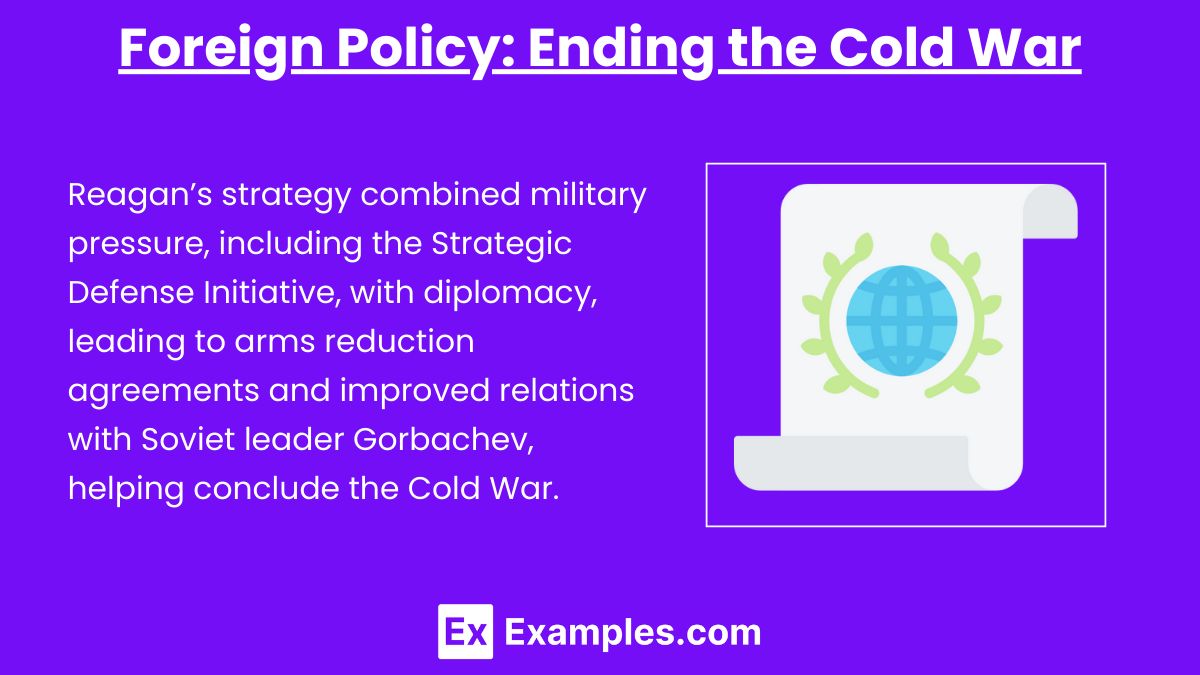
- Peace Through Strength: Reagan’s Cold War strategy involved military build-up, including the Strategic Defense Initiative (SDI) (nicknamed “Star Wars”), which aimed to create a missile defense system to protect against Soviet attacks.
- Confronting Communism: Reagan took a hard stance against communist regimes, calling the Soviet Union the “Evil Empire” in 1983. He expanded U.S. support for anti-communist insurgents around the world, including in Afghanistan, Nicaragua (via the Contras), and Grenada.
Key Events in the Cold War
- Nuclear Arms Race: Reagan dramatically increased military spending, particularly on nuclear weapons. The U.S. and the USSR were engaged in an intense arms race during this period.
- Negotiations with Gorbachev: Despite his initial hardline stance, Reagan shifted towards diplomacy in his second term, working with Soviet leader Mikhail Gorbachev. Key agreements included the Intermediate-Range Nuclear Forces Treaty (INF Treaty) in 1987, which marked the first time the superpowers agreed to reduce their nuclear arsenals.
- Fall of the Soviet Union: Although the Soviet Union officially dissolved in 1991 (after Reagan left office), his presidency is credited with contributing to its decline through a combination of military pressure and diplomatic engagement.
Examples
- Reaganomics: Reagan’s economic policy focused on tax cuts, deregulation, and reduced government spending, emphasizing supply-side economics to promote business growth and lower inflation.
- Military Build-Up: Reagan significantly increased defense spending, including launching the Strategic Defense Initiative (SDI), to counter the Soviet Union during the Cold War.
- Appointment of Conservative Judges: Reagan appointed conservative justices like Sandra Day O’Connor and Antonin Scalia, reshaping the U.S. Supreme Court with a more conservative tilt.
- Support for the Religious Right: Reagan’s alignment with evangelical groups like the Moral Majority promoted traditional family values and opposition to issues like abortion and the Equal Rights Amendment.
- Iran-Contra Affair: In this scandal, Reagan’s administration illegally sold arms to Iran and funneled the proceeds to support the Contras in Nicaragua, highlighting conservative support for anti-communist movements abroad.
MCQs
1. Which of the following economic policies is most closely associated with Ronald Reagan’s presidency?
A. Keynesian economics
B. Supply-side economics
C. Protectionism
D. Socialism
Answer: B. Supply-side economics
Explanation: Reagan’s economic policy cut taxes to stimulate business investment, hoping wealth would trickle down to all. This contrasted with government-driven Keynesian spending.
2. What was the primary goal of Reagan’s Strategic Defense Initiative (SDI)?
A. To promote free trade agreements
B. To provide economic aid to developing nations
C. To develop a missile defense system to protect against Soviet attacks
D. To strengthen NATO’s military presence in Europe
Answer: C. To develop a missile defense system to protect against Soviet attacks
Explanation: Reagan’s SDI aimed to develop a missile defense system to protect the U.S. from Soviet nuclear attacks during the Cold War.
3. The Iran-Contra Affair involved:
A. The U.S. selling arms to Israel and funneling funds to Iraq
B. Secret arms sales to Iran to fund anti-communist forces in Nicaragua
C. Providing military aid to Iran during the Iran-Iraq War
D. Reagan’s administration covertly supporting communist movements in South America
Answer: B. Secret arms sales to Iran to fund anti-communist forces in Nicaragua
Explanation: Reagan’s administration secretly sold arms to Iran, using the funds to support Nicaraguan Contras, violating U.S. law and sparking a major political scandal.

